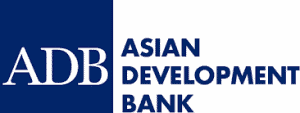While the western region of the country is developing at a dizzying pace, many dzongkhags in east and south have fallen behind. And it appears that it would take some effort to bridge the yawning development gap.
Speaking to Business Bhutan, Prime Minister Dr Lotay Tshering said: “There is no clear solution for balanced regional development.”
Lyonchhen said that anywhere in the world, and more so in the underdeveloped parts of the world, regional disparity is wide.
However, Lyonchhen said works to promote balanced regional development continues with policies and actions to spread growth and development more widely across the country. “Now, Bhutan is graduating from Least Developed Country (LDC), so we must focus on achieving more balanced regional development,” said Prime Minister.
Lyonchhen said that Bhutan must have a few more Thimphus and Phuentsholings in other parts of the country to narrow the gap of regional balanced development.
He said that the government is planning to achieve more balanced regional development by having more economic activities in the localities, providing more employment opportunities and equal distribution of tourists in every region.
Lyonchhen added that by providing such facilities, locals can generate revenue for the locality.
Further, he mentioned that tourism plays a vital role in achieving more balanced regional development. “Though the earlier governments have been working on promoting equal tourism in every district, only few districts have been benefited.”
The Prime Minister said spreading tourists in all 20 dzongkhags would be difficult. However, the government would focus on maximizing the revenue from tourists visiting popular places and share the revenue with other districts.
For instance, the revenue that Paro and Bumthang gets will also be given to places like Trashigang and Zhemgang. “Some of the districts will not get tourists but these districts will get the share of revenue that other districts get.”
Similarly, Economic Affairs Minister, Loknath Sharma, said that to ensure balanced regional development, the government is focusing on promoting small and cottage industries in every district of the country.
“When there are more economic activities in the locality, it will help generate income thus achieving more balanced regional development in the country,” said the minister.
The Poverty Analysis Report (PAR), 2017 states that about 26,953 are poor individuals, of which 40% of the total poor population is in three dzongkhags of Dagana, Samtse and Mongar. These dzongkhags also have the highest subsistence poverty rate.
With less than 1% of poverty rate, Haa, Thimphu and Paro recorded the lowest poverty rate.
The population poverty by dzongkhag was recorded highest in Dagana and Zhemgang with 33.3% and 25.1% respectively while dzongkhags like Thimphu and Phuentsholing have 0.6%, and 0.9% of population poverty respectively.
In terms of subsistence poverty, the highest rate is observed in Dagana with 11% of the population being extremely poor. About a quarter (23.2%) of all the extremely poor in Bhutan resides in Dagana.
Some dzongkhags such as Bumthang, Paro and Thimphu have virtually no subsistence poverty.
Regarding household poverty, Dagana (23.7%), Zhemgang (16.3%), and Mongar (14.6%) have higher proportion of poor households.
According to the report, 11.9% of the rural population is poor and 0.8% of urban population is poor.
Lack of facilities like education and employment opportunities in some parts of the country has led to increasing number of rural-urban migration.
Rural-urban migration is the highest compared to other flows of migration stream. The most cited reasons for rural-urban migration are family move (17.8%), followed by employment (12.7%) and education (8.56%), according to the PAR 2017.
The tourism sector has benefited the country in terms of revenue and employment generation. However, not all 20 dzongkhags shared its benefits equitably.
In 2017, 254,704 tourists visited Bhutan, of which 183,287 were regional tourists. Paro recorded the highest number of international arrivals at 27.5% in 2017, followed by Thimphu and Punakha with 26.4 and 23.1% respectively. Wangduephodrang saw 7.9% arrivals while Bumthang received 5.1% of the arrivals.
The rest of the dzongkhags saw less than 5% of the total arrivals in the country. Pemagatshel, Tsirang and Dagana did not receive any tourist in 2017.
In a recent policy move, the government has endorsed entry and exit of regional tourists through the border towns of Samdrup Jongkhar, Gelephu, Samtse, Nganglam and Pangbang. This is expected to boost tourism in other parts of the country.
Currently, Phuentsholing is the only entry point for the regional tourists.
Jigme Wangchen from Thimphu












